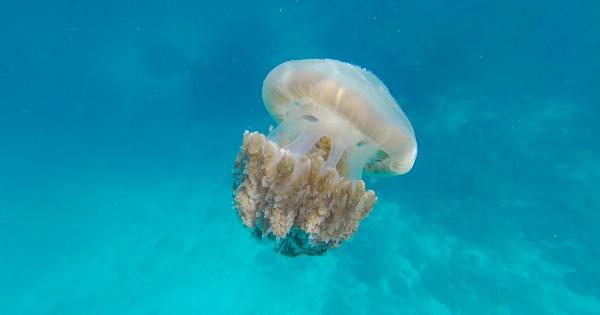Spending a day at the beach can be a fun and relaxing experience. However, encountering a jellyfish in the water can quickly turn that tranquility into pain and discomfort.
Jellyfish stings are not only painful but can also pose serious health risks if not treated properly. In this article, we will explore what you should never do when stung by a jellyfish to ensure your safety and speedy recovery.
1. Panic
One of the most important things to remember when stung by a jellyfish is to stay calm. Panicking can lead to irrational decisions and worsen the situation.
While the initial sting may be painful, it is crucial to remain composed and focused on finding immediate relief.
2. Rub or Scratch the Affected Area
When stung by a jellyfish, it may be tempting to rub or scratch the affected area in an attempt to alleviate the pain.
However, this can actually worsen the sting by causing the venomous cells present in the tentacles to discharge more toxin into your skin. Instead, try to resist the urge to touch or agitate the area.
3. Rinse the Sting with Fresh Water
Contrary to popular belief, rinsing a jellyfish sting with fresh water is not recommended. Freshwater can cause the venomous cells to release more toxins and worsen the sting.
It is best to use saltwater to rinse the affected area as seawater helps to remove any remaining tentacles or nematocysts while reducing the pain and preventing further discharge of venom.
4. Apply Urine or Vinegar
Another myth that should never be followed is the application of urine or vinegar on a jellyfish sting. Both of these substances may not only increase pain but also interfere with the natural venom neutralization process.
Instead, focus on the appropriate treatment methods that can effectively alleviate the symptoms.
5. Scrub the Area with a Towel or Clothing
Scrubbing the affected area with a towel or clothing is not advisable when stung by a jellyfish. This aggressive action can stimulate the undischarged venomous cells, leading to more discomfort.
Instead, carefully remove any tentacles with tweezers, avoiding direct contact with your skin. You can also use a credit card or any other object with a hard edge to gently scrape off the tentacles.
6. Neglect Seeking Medical Help
Some jellyfish stings can be mild and may not require medical attention. However, if you experience severe pain, difficulty breathing, chest pain, or if the sting covers a large area of your body, it is crucial to seek immediate medical help.
Ignoring these symptoms can lead to complications and delayed recovery.
7. Ignore Allergic Reactions
While most jellyfish stings cause mild to moderate symptoms, some individuals may experience allergic reactions. These reactions can range from skin rashes and hives to more severe symptoms like difficulty breathing or anaphylactic shock.
It is essential to be aware of any allergic reactions and seek professional medical assistance if needed.
8. Apply Pressure Bandages
Applying pressure bandages on a jellyfish sting is not recommended. The pressure from the bandage may increase the release of venom. It is best to keep the affected area as still as possible to minimize the spread of toxins throughout your body.
9. Disregard First Aid Measures
Knowing the correct first aid measures can significantly reduce the discomfort caused by a jellyfish sting.
Applying heat to the affected area, such as immersing it in hot water (at a tolerable temperature) for around 20 to 45 minutes, can help neutralize the venom and alleviate pain. It is crucial to follow these first aid measures promptly for optimal results.
10. Assume All Jellyfish Stings are the Same
It is vital to understand that not all jellyfish stings are the same. Different species of jellyfish have varying degrees of venom potency and can cause different reactions in humans.
Therefore, it is crucial not to generalize the treatment for jellyfish stings but to consider the specific characteristics of the sting to ensure appropriate care.





























